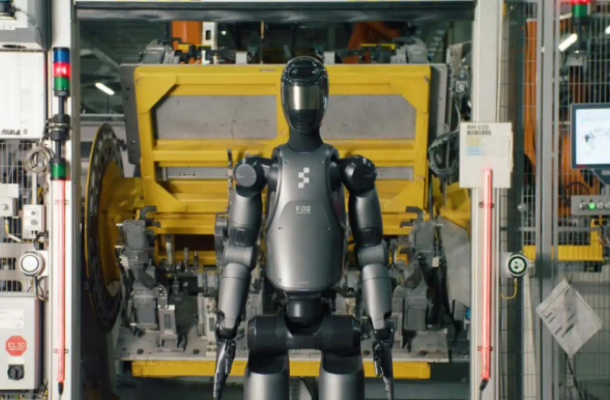Discover how the advanced humanoid robot Figure 02 is being tested by BMW for assembly work, potentially revolutionizing automotive production. Int
Discover how the advanced humanoid robot Figure 02 is being tested by BMW for assembly work, potentially revolutionizing automotive production.
Introduction: In a groundbreaking move towards the future of automotive manufacturing, BMW has begun testing a humanoid robot, Figure 02, at its Spartanburg assembly plant. Developed by the California-based company Figure, this advanced robot is being evaluated for its potential to assist in car component assembly. As BMW explores innovative ways to enhance production efficiency, Figure 02 could soon become a key player in the assembly line of some of the world’s most popular vehicles.
Figure 02: A New Era of Humanoid Robotics in Manufacturing
Figure 02 represents the pinnacle of humanoid robotics, designed to work alongside humans in complex industrial environments. Unlike many prototype robots that remain in the testing phase, Figure 02 is fully operational and available for purchase and use. BMW’s decision to test this robot at its Spartanburg plant underscores the automaker’s commitment to integrating cutting-edge technology into its production processes.
During its trial at the Spartanburg assembly plant, Figure 02 was tasked with performing assembly work on car components—a crucial step in evaluating its practical application in a real-world manufacturing setting. The robot’s ability to handle these tasks with precision and efficiency will determine its future role within BMW’s production lines.
BMW’s Strategic Move Towards Automation
BMW’s interest in humanoid robots like Figure 02 signals a strategic shift towards increased automation in automotive manufacturing. As the industry faces growing demand for vehicles and the need for more efficient production methods, robots like Figure 02 could play a crucial role in meeting these challenges. If BMW is satisfied with the robot’s performance, it may lead to wider adoption of humanoid robots across its global assembly plants.
The potential for humanoid robots to work alongside human workers in assembling complex vehicles like the BMW X5 is a significant development. While full automation is still a distant goal, the integration of robots like Figure 02 could streamline production processes, reduce labor costs, and increase overall efficiency. However, the transition to robotic assistance in assembly is likely to be gradual, with thorough testing and evaluation required before widespread implementation.
The Future of Robotics in Automotive Production
Figure 02’s trial at BMW’s Spartanburg plant is just the beginning of what could be a transformative period for the automotive industry. As robotics technology continues to advance, the possibility of humanoid robots playing a central role in vehicle production becomes increasingly feasible. For now, BMW is taking cautious steps, ensuring that any integration of robots like Figure 02 into their assembly lines is seamless and beneficial.
While it may be some time before we see humanoid robots like Figure 02 working alongside human employees on a large scale, the potential is undeniable. The collaboration between human workers and robots could lead to more efficient production, higher quality vehicles, and ultimately, a more innovative and competitive automotive industry.
Conclusion: A Glimpse into the Future
The introduction of Figure 02 into BMW’s assembly process marks a significant milestone in the evolution of automotive manufacturing. As BMW continues to evaluate the robot’s capabilities, the automotive world watches closely, anticipating the potential impact of humanoid robots on the industry. If successful, Figure 02 could pave the way for a new era of production, where advanced robotics and human expertise combine to build the vehicles of the future.

COMMENTS